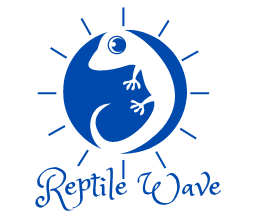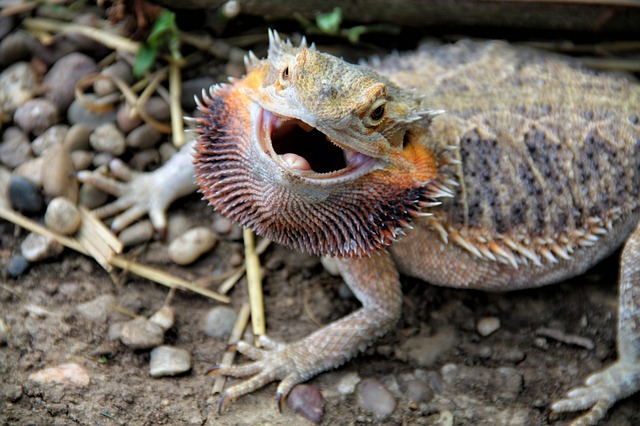Bearded dragons exhibit unique defense mechanisms when they feel threatened. In what is known as the “beard display” or “beard puffing,” they inflate the spiny pouch under their chin, which darkens and resembles a beard. This is often accompanied by behaviors like body flattening, hissing, mouth-opening, and puffing up to appear larger, all designed to deter potential threats.
Moreover, these defensive responses are a natural part of their survival instincts, but they can be minimized by providing a stress-free environment, appropriate temperature, lighting, and a well-balanced diet. Gentle handling and regular interaction can help them become more accustomed to human contact and reduce their defensive tendencies.
What is Bearded Dragon Defense Mode?
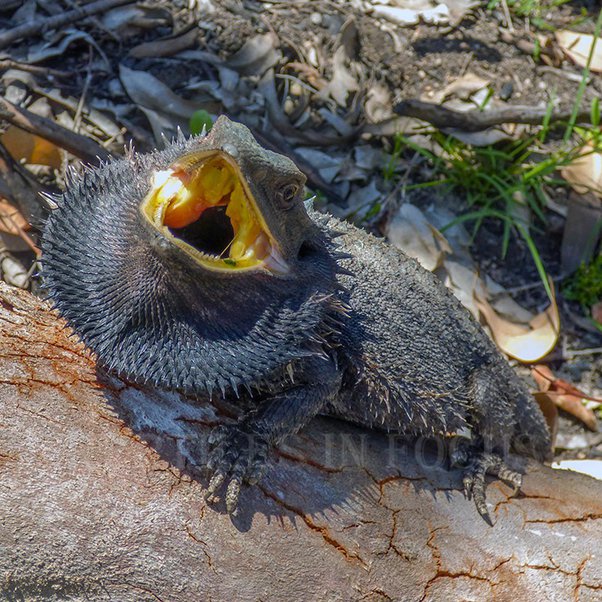
Bearded Dragon defense mode refers to a set of behaviors and physical changes displayed by these reptiles when they feel threatened or perceive danger in their environment. During this mode, the bearded dragon may display various defensive postures and actions aimed at deterring potential threats or predators. This mode is an innate survival mechanism that helps these creatures protect themselves in the wild.
Triggers for Defense Mode
Perceived Threats: Bearded dragons may enter defense mode when they perceive threats such as sudden movements, loud noises, or unfamiliar objects or people in their environment. This response is a result of their natural instincts to protect themselves from potential harm.
Handling Stress: Improper handling or excessive handling, especially by inexperienced or rough handlers, can lead to stress in bearded dragons, prompting them to adopt a defensive stance as a means of self-protection.
Aggressive Encounters: Interactions with other territorial bearded dragons or aggressive pets in the household can trigger defense mode, as they may perceive these encounters as potential threats to their safety or territory.
Importance of Recognizing It
Recognizing when a bearded dragon is in defense mode is crucial for ensuring the safety of both the reptile and the handler. Understanding their defensive behaviors can help prevent unnecessary stress and potential harm to the animal during interactions.
Furthermore, by recognizing and respecting a bearded dragon’s defense mode, handlers can build a stronger bond of trust with their pet. Respecting their boundaries and responding appropriately to their defensive signals can foster a sense of security and comfort for the bearded dragon.
The ability to recognize defense mode also allows pet owners to monitor their bearded dragon’s overall well-being. Persistent or frequent defensive behaviors may indicate underlying stress, health issues, or environmental concerns that need to be addressed for the reptile’s long-term health and happiness.
What are the signs of bearded dragon defense mode?
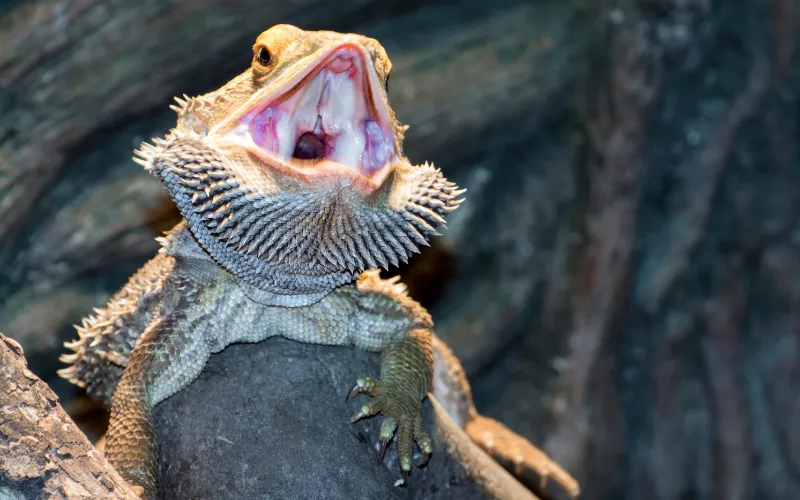
The reasons behind a bearded dragon’s entry into defense mode is crucial for creating a supportive and stress-free environment for these reptiles.
Threat Perception
Bearded dragons enter defense mode primarily in response to their perception of threats in their environment. Their natural instincts drive them to react defensively when they sense potential dangers, such as the presence of predators, unfamiliar stimuli, or sudden movements.
Their keen sense of awareness allows them to react swiftly to perceived threats, adopting defensive behaviors as a means of self-preservation.
Stress Factors
Various stressors can prompt bearded dragons to enter defense mode. Stress factors may include environmental changes, improper handling, inadequate living conditions, or disruptions to their daily routine.
These stressors can lead to heightened anxiety and discomfort, causing the bearded dragons to exhibit defensive behaviors as a way to cope with their perceived stress and maintain a sense of security in their surroundings.
Health Concerns
In some cases, bearded dragons may enter defense mode due to underlying health issues or discomfort. Health concerns such as injuries, illnesses, or nutritional deficiencies can contribute to their overall stress levels, leading to defensive behaviors as a response to their physical discomfort.
Moreover, it is essential for pet owners to monitor their bearded dragons’ health regularly and seek veterinary care when necessary to ensure their well-being and prevent the development of defensive responses linked to underlying health concerns.
Territorial Behavior
Bearded dragons are known to exhibit territorial behavior, especially in captivity or when housed with other bearded dragons. They may enter defense mode when they perceive encroachment on their territory by other animals or humans.
Furthermore, this territorial aggression can manifest as defensive posturing, vocalizations, or aggressive displays, aimed at establishing boundaries and defending their perceived territory from potential intruders or competitors.
Handling a bearded dragon in defense mode can be tricky, as these animals might display defensive behaviors such as puffing up their bodies, hissing, or even trying to bite.
How to Handle a Bearded Dragon Defense Mode?
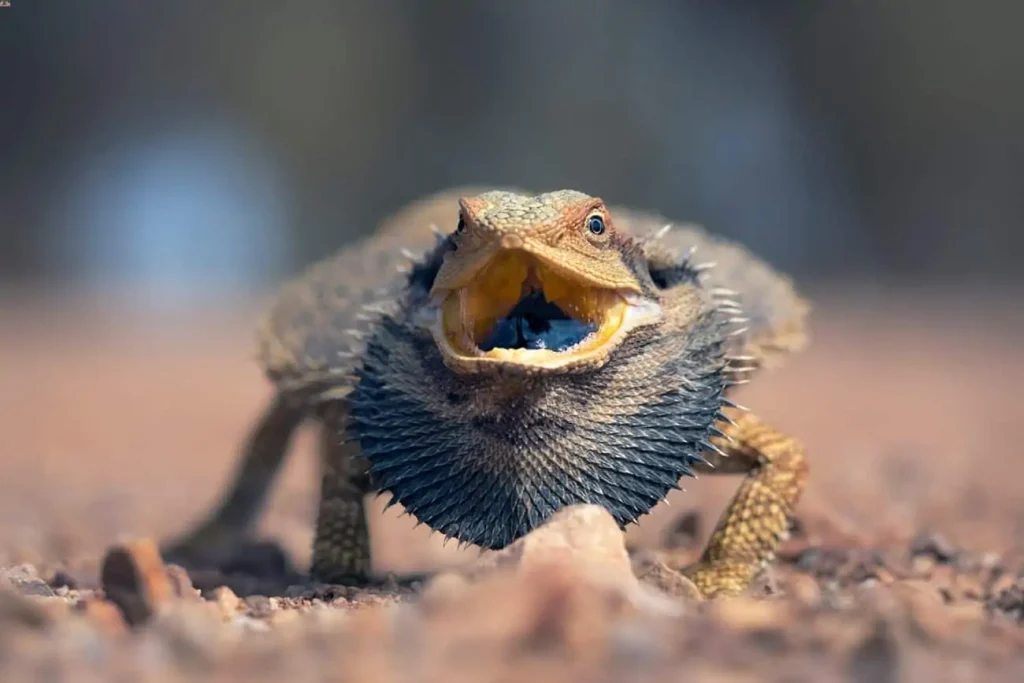
Handling a bearded dragon defense mode can be tricky, as these animals might display defensive behaviors such as puffing up their bodies, hissing, or even trying to bite.
Do’s and Don’ts
| Do’s | Don’ts |
| Remain calm and avoid sudden movements when handling a bearded dragon in defense mode. | Attempt to force handling or interaction when the bearded dragon is displaying clear defensive behaviors. |
| Give the bearded dragon space and time to calm down before attempting to handle or interact with it. | Ignore warning signs, such as hissing, arm-waving, or darkening of the beard, as these behaviors indicate the bearded dragon’s discomfort or stress. |
| Use gentle and slow movements when attempting to pick up or handle a bearded dragon to avoid escalating its defensive response. | Disregard the bearded dragon’s body language and cues indicating discomfort or stress. |
Safety Precautions
Use proper handling techniques, ensuring adequate support for the bearded dragon’s body to minimize the risk of injury or stress.
Wear protective gloves if necessary, especially when dealing with highly defensive or aggressive bearded dragons.
Create a secure and controlled environment for handling, minimizing the risk of escape or injury to both the handler and the bearded dragon.
Keep other pets or potential stressors away during handling to prevent further agitation or stress for the bearded dragon.
Reducing Stress Factors
Maintain a consistent and appropriate environmental setup, including temperature, humidity, and lighting, to create a comfortable and stress-free habitat for the bearded dragon.
Provide a well-balanced diet with the appropriate nutritional supplements to support the bearded dragon’s overall health and well-being.
Minimize disturbances and loud noises in the surrounding environment to reduce stress levels and promote a sense of security for the bearded dragon.
In addition, avoid excessive handling and provide ample opportunities for the bearded dragon to rest and retreat in its enclosure to minimize stress levels and encourage relaxation.
Gradual Acclimatization
Allow the bearded dragon to become familiar with its new environment gradually, providing ample time for acclimatization and adjustment.
Introduce handling sessions gradually, starting with short and infrequent interactions to build the bearded dragon’s tolerance and trust over time.
Monitor the bearded dragon’s response during handling sessions, adjusting the duration and frequency of interactions based on its comfort level and response to handling.
Offer positive reinforcement, such as favorite treats or gentle strokes, to create a positive association with handling and encourage a sense of security and comfort for the bearded dragon.
FAQ’s
Bearded dragons often rely on their natural camouflage, blending with their surroundings to evade predators.
No, bearded dragons are not typically protected under conservation laws, as they are commonly bred in captivity.
In the wild, bearded dragons may be preyed upon by larger reptiles, birds of prey, and some mammals.
Bearded dragons can develop trust through gentle handling and consistent care, associating humans with positive experiences.
Bearded dragons have good eyesight and can perceive humans through their visual and spatial awareness abilities.
Bearded dragons possess exceptional climbing skills, acute vision, and a keen sense of their environment.
Final Words
In conclusion, when bearded dragons feel scared, they do special things like puffing up, hissing, and making their beard dark. It’s important to know these signs for the dragons and the people taking care of them. Figuring out what makes them scared, like things that look dangerous or how they’re handled, can help make them less scared.
Furthermore, you need to handle a scared bearded dragon, stay calm, give them space, and be gentle. Making sure things are safe, helping them feel less scared, and letting them get used to things slowly can help them trust you more and feel safer with you.
